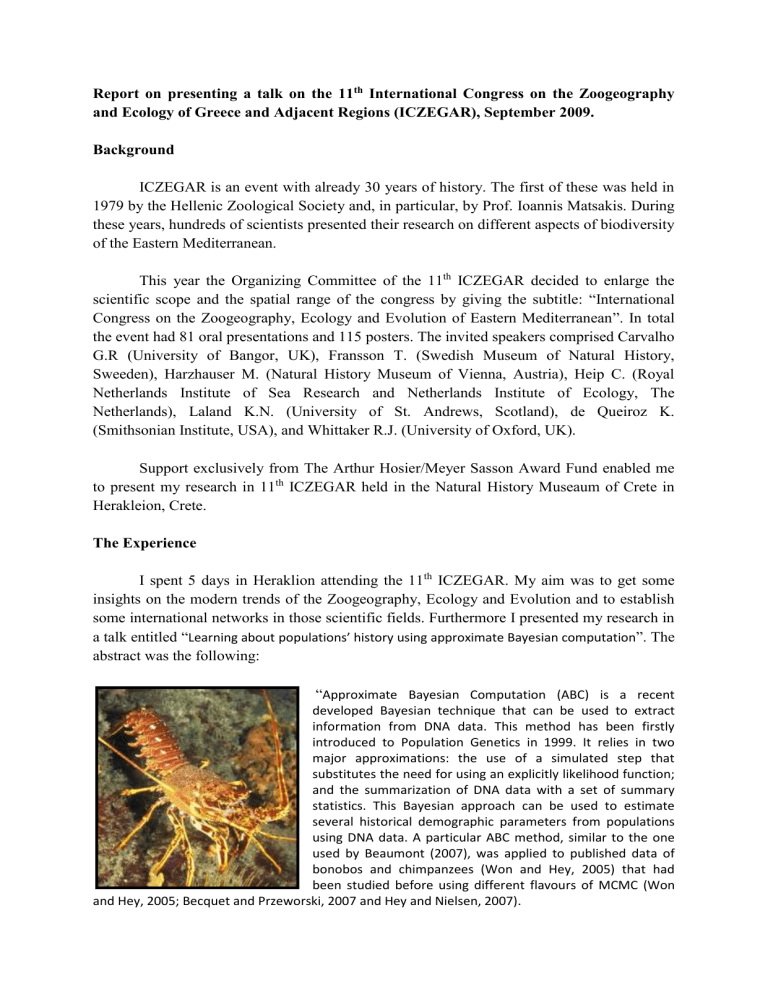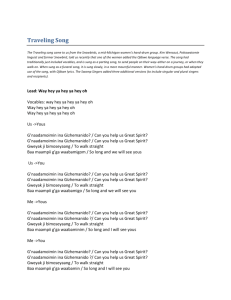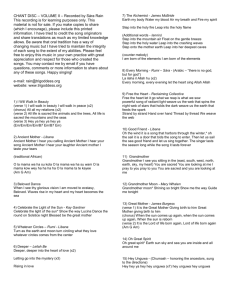Report on presenting a talk on the 11th International Congress on

Report on presenting a talk on the 11 th International Congress on the Zoogeography and Ecology of Greece and Adjacent Regions (ICZEGAR), September 2009.
Background
ICZEGAR is an event with already 30 years of history. The first of these was held in
1979 by the Hellenic Zoological Society and, in particular, by Prof. Ioannis Matsakis. During these years, hundreds of scientists presented their research on different aspects of biodiversity of the Eastern Mediterranean.
This year the Organizing Committee of the 11 th
ICZEGAR decided to enlarge the scientific scope and the spatial range of the congress by giving the subtitle: “International
Congress on the Zoogeography, Ecology and Evolution of Eastern Mediterranean”. In total the event had 81 oral presentations and 115 posters. The invited speakers comprised Carvalho
G.R (University of Bangor, UK), Fransson T. (Swedish Museum of Natural History,
Sweeden), Harzhauser M. (Natural History Museum of Vienna, Austria), Heip C. (Royal
Netherlands Institute of Sea Research and Netherlands Institute of Ecology, The
Netherlands), Laland K.N. (University of St. Andrews, Scotland), de Queiroz K.
(Smithsonian Institute, USA), and Whittaker R.J. (University of Oxford, UK).
Support exclusively from The Arthur Hosier/Meyer Sasson Award Fund enabled me to present my research in 11 th
ICZEGAR held in the Natural History Museaum of Crete in
Herakleion, Crete.
The Experience
I spent 5 days in Heraklion attending the 11 th
ICZEGAR. My aim was to get some insights on the modern trends of the Zoogeography, Ecology and Evolution and to establish some international networks in those scientific fields. Furthermore I presented my research in a talk entitled “ Learning about populations’ history using approximate Bayesian computation
”. The abstract was the following:
“
Approximate Bayesian Computation (ABC) is a recent developed Bayesian technique that can be used to extract information from DNA data. This method has been firstly introduced to Population Genetics in 1999. It relies in two major approximations: the use of a simulated step that substitutes the need for using an explicitly likelihood function; and the summarization of DNA data with a set of summary statistics. This Bayesian approach can be used to estimate several historical demographic parameters from populations using DNA data. A particular ABC method, similar to the one used by Beaumont (2007), was applied to published data of bonobos and chimpanzees (Won and Hey, 2005) that had been studied before using different flavours of MCMC (Won and Hey, 2005; Becquet and Przeworski, 2007 and Hey and Nielsen, 2007).
Two data sets of human populations from the Nicobar and Andamanese islands and Central Africa have also been studied, as well as, one data set composed by 6 distinct species of spiny lobsters. The
ABC studies confirm the competitiveness of this recently explored Bayesian method when compared to a standard MCMC approach. Its potential role on phylogeography and demography researches is emphasized.
M. Beaumont. Joint determination of topology, divergence time, and immigration in population trees. In Simulation, Genetics, and Human
Prehistory, edited by S. MATSUMURA, P.
FORSTER and C. RENFREW. McDonald Institute for Archaeological Research, Cambridge, 2007.
C. Becquet and M. Przeworski. A new method to estimate parameters of speciation models, with application to apes. Genome Research,
17:1505-1519, 2007.
J. Hey and R. Nielsen. Integration within the
Felsenstein equation for improved Markov chain Monte Carlo methods in population genetics. PNAS,
104:2785-2790, 2007.
J. K. Pritchard, M. T. Seielstad, A. Perez-Lezaun, and M. W. Feldman. Population growth of human Y chromosomes: a study of Y chromosome microsatellites. Mol Biol Evol,
16:1791–1798, 1999.
Y. J. Won and J. Hey. Divergence population genetics of chimpanzees. Mol Biol Evol, 22:297-
307, 2005.
”
< 2 Mya
The conference had a very friendly atmosphere and it was prune to engage in intellectually stimulating debates.
Closing comments
I would like to express deep gratitude to the Selection Committee for awarding me the
Arthur Hosier/Meyer Sasson Award, without which the presentation of my work in this international conference would not be possible. I established strong links with several scientists in my field of work which may reveal very important for scientific collaborations in the future.









